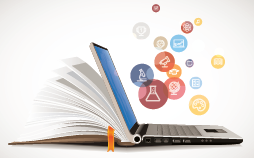EDUCATION AND TECHNOLOGY
Today many computer experts claim that traditional language learning methods used in classrooms will gradually be replaced by newer methods. Some of these methods include e-learning, attending virtual classrooms, using emails and interactive CDs.
E-learning is short for ‘electronic learning’, and it means any kind of learning environment which is electronic. On the Internet there are countless sites for language learning. These include worksheets you can download, interactive games, puzzles, quizzes and so on.
We believe that in the future there will be times when we will no longer have to go to class. Instead, we will sit in front of the computer and meet our teacher and other learners in a ‘virtual’ classroom. This type of learning makes the learner more independent and flexible. The teacher, or moderator, encourages the language learner to analyse what and how he or she wants to learn and then helps him or her to achieve those goals. Virtual classroom can use all the online resources available and usually use a type of chat room to practise oral communication.
Also, there are interactive language learning CDs which offer a range of benefits to the learners. Learners can work at their own speed and can repeat vocabulary and phrases as often as they wish. Conversations are spoken by native speakers, which helps with pronunciation. CDs use a wide range of media – short film clips of typical scenes and situations, music, interactive quizzes and much more.
So what will happen to teachers in the future? Will teaching be completely without a teacher? It is unlikely; however, it is true that the new media will play an increasingly important part in all areas of learning.

